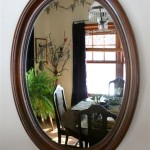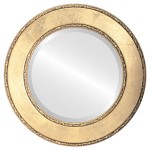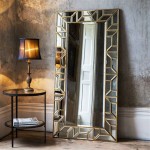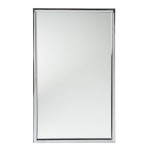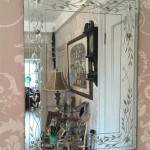How To Hang a Heavy Mirror With Glue
Hanging a heavy mirror securely requires careful planning and execution. While traditional methods like wires and D-rings offer reliable support, adhesive solutions have gained popularity for their clean, hardware-free aesthetic. This guide outlines the essential steps for successfully mounting a heavy mirror using specialized mirror adhesive.
Assessing the Mirror and Wall: Before initiating the process, several factors warrant careful consideration. The mirror's weight is paramount. Consult the manufacturer’s specifications or weigh the mirror accurately. The wall's material and condition are also critical. Adhesive mounting is generally suitable for smooth, flat surfaces like drywall, plaster, or tile. Textured, uneven, or wallpapered surfaces may compromise the adhesive's grip. Painted surfaces should be inspected for peeling or chipping, which could affect adhesion.
Choosing the Right Adhesive: Selecting an appropriate mirror adhesive is fundamental to the process. Several high-strength adhesives specifically designed for heavy mirrors exist on the market. These adhesives are typically formulated to bond with various surfaces and offer superior weight-bearing capacity. Always consult the adhesive manufacturer’s instructions and ensure the product is rated for the mirror's weight and the specific wall material. The adhesive's cure time, which represents the time required for the bond to reach maximum strength, should also be factored into the planning.
Surface Preparation: Thorough surface preparation is crucial for optimal adhesion. The wall surface should be cleaned with a mild detergent and water, then thoroughly dried. Any dust, dirt, or grease can interfere with the adhesive bond. For glossy surfaces, lightly sanding with fine-grit sandpaper can improve adhesion. Similarly, the back of the mirror where the adhesive will be applied should be cleaned and dried.
Applying the Adhesive: Follow the adhesive manufacturer’s instructions precisely regarding application. Generally, the adhesive is applied in a pattern designed to distribute weight evenly. Common patterns include vertical lines, a grid pattern, or a series of dots. Avoid applying the adhesive too close to the mirror's edges to prevent squeeze-out when the mirror is pressed against the wall. The amount of adhesive required depends on the mirror's size and weight; consult the adhesive instructions for guidance.
Mounting the Mirror: Once the adhesive is applied, carefully position the mirror against the wall. Use a level to ensure the mirror is straight both vertically and horizontally. Firmly press the mirror against the wall to ensure proper contact with the adhesive. Some adhesives may require supporting the mirror for a period while the adhesive sets. The manufacturer’s instructions will provide specific guidance on supporting methods and duration.
Adding Support (Optional): For exceptionally heavy mirrors or situations requiring additional security, consider incorporating supplementary support mechanisms. Small cleats or brackets installed beneath the mirror can provide extra support during the curing process and offer long-term stability. These supports can be removed once the adhesive has fully cured, if desired.
Curing Time: Allow the adhesive to cure completely before removing any temporary supports. The curing time varies depending on the specific adhesive used and ambient conditions such as temperature and humidity. Consult the adhesive manufacturer’s instructions for the recommended curing time. Avoid placing any objects or applying pressure to the mirror during the curing period.
Safety Precautions: When working with adhesives, ensure adequate ventilation. Wear appropriate safety gear such as gloves and eye protection. If the adhesive comes into contact with skin, wash the affected area thoroughly with soap and water. Keep adhesives out of reach of children and pets. Review the adhesive manufacturer’s safety data sheet for detailed safety information.
Alternative Mounting Solutions for Extremely Heavy Mirrors: For exceptionally heavy or oversized mirrors, alternative mounting methods may be necessary. Consult a professional glazier or contractor experienced in handling large mirrors for advice on appropriate installation techniques. Specialized hardware and support systems may be required to ensure secure and long-lasting mounting in these situations. Professional installation can mitigate the risk of damage to the mirror or the wall and ensure the mirror is securely mounted for long-term safety and stability.

How To Glue A Heavy Mirror The Wall Mom Blog Society
How To Hang A Heavy Mirror On Drywall Without Damaging It Or The Wall Quora

How To Hang A Heavy Mirror C R F T

How To Hang A Heavy Mirror With Pictures Wikihow

Using Command Strips For Hanging A Mirror The Morris Mansion

3 Simple Ways To Hang A Mirror On Wall Without Nails Wikihow

How To Hang A Heavy Mirror With Pictures Wikihow

How To Hang A Heavy Mirror The Home Depot

How To Hang A Mirror With No Slip Adhesive

How To Hang A Heavy Mirror The Home Depot

